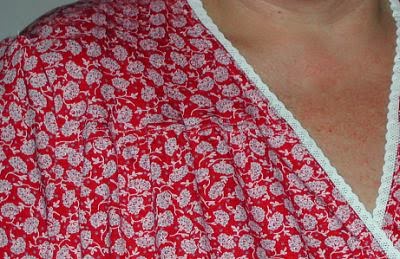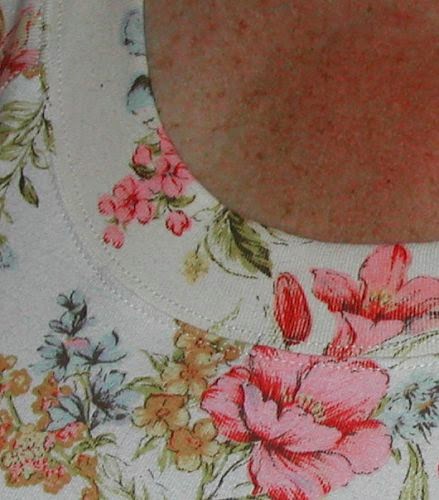Needles
Babylock and Janome recommend Schmetz ELX705 needles for their stand-along coverstitch machines (The Brother 2340 can use all standard Schmetz needles, same as for your home sewing machine.)
The ELX705 scarf is longer than a standard sewing machine needle so when the looper passes it picks up the thread better. There is also a long groove at the back of the EL needle to hold the thread as it goes into the fabric to prevent abrasion and thread breakage. The Schmetz ELX705 needle point shape is similar to the light ball point Schmetz "SES" needle.
I use both Schmetz ELX705 and Organ SY2922 needles interchangeably in my Babylock CS, although the Organ needles are available in more sizes (#11/75, #12/80, and #14/90) and are usually less expensive so I've been using Organ needles mostly.
Thread nets
Always use thread nets on your needle threads. You may also want to use a net on your looper thread, especially if using Wooly Nylon. The nets provide an extra bit of tension needed to form prettier and more uniform stitches. See photos below. I must thank Belinda for urging me to use the nets already included with my machine's accessories.They really do make a big difference.
How to treat the beginning coverstitch needle thread, or when you start a coverstitch, can you just clip the threads, or do you have to pull them to the other side and tie them off?
There are various answers depending on what you're doing ...
If I'm coverstitching in the round (like a sleeve hem), I will pull the starting needle threads to the back so it looks neater. But that's me. The beginning stitches won't come undone easily so you can just snip them, but for added "insurance" you might want to either (a) start with a very small stitch length for a few stitches and/or (b) if stitching in the round, stitch over the first few stitches before pulling the ending threads to the back.
If I'm stitching flat and the stitches will be enclosed in a seam or crossed by other stitching, then I always just snip them.
Where to buy attachments and how to attach the generics?
Babylock, Brother, and Janome all have some attachments designed specifically for their branded CS machines. The Babylock CS machine can use "generic" industrial attachments without modification and they cost a fraction of the cost for the identical attachments sold through Babylock and its dealers. See photo below which shows a Babylock binder with generics. Which is the Babylock and which are the generics?
The other CS machines can also use most generics but you will have to somehow modify how you attach them to your machine. Blu-Tack or Sticky Tack or even duct tape and masking tape have all been used by owners of those machines. See the links below for Belinda's page and the Janome thread on Pattern Review.
Janome sells their own binder which comes with a flat plate which is attached to the bed of the Janomes before attaching the binder. I think Janome CS owners will have much better results with the generic binders if they first purchase the Janome "kit" so they can use this plate with the generics. See photo of Janome binder below.
I bought my generic attachments from an Ebay seller. His old Ebay ID was CutSewSupply but he is now selling under the ID of SharpSewing.
Click Here for his Ebay store. I have absolutely no affiliation with this seller and he tends to not reply to most emails so I can't help you with that. I do know that he is reputable and any items you order will be received.
Sew Link on Amazon seller also has some generic binders
(not a monetized link).
What size binder(s) to buy?
Well, here are my favs ... The binder I use the most is the 1-1/8" A style. This makes a 3/8" binding that is folded twice on top and only once on bottom.
My next fav is the 1-1/2" B, which makes a 3/8" binding folded twice both top and bottom.
After that, the one that makes 1/2" bindings folded twice (which is the *only* one I bought from the Babylock dealer).
I like the 3/8" bindings for girl stuff and the 1/2 bindings for the guys.
What size belt loop folder to buy?
Your preferences may differ, of course, but I like the 3/4" cut size belt looper folder which will make strips finished at 3/8". I think this size replicates RTW belt loops.
Other Coverstitching Links
•
Rebecca's Sewing Corner YouTube Double Fold Bias Binder Tutorial and check out her other GREAT tutorials on YouTube
here


























































